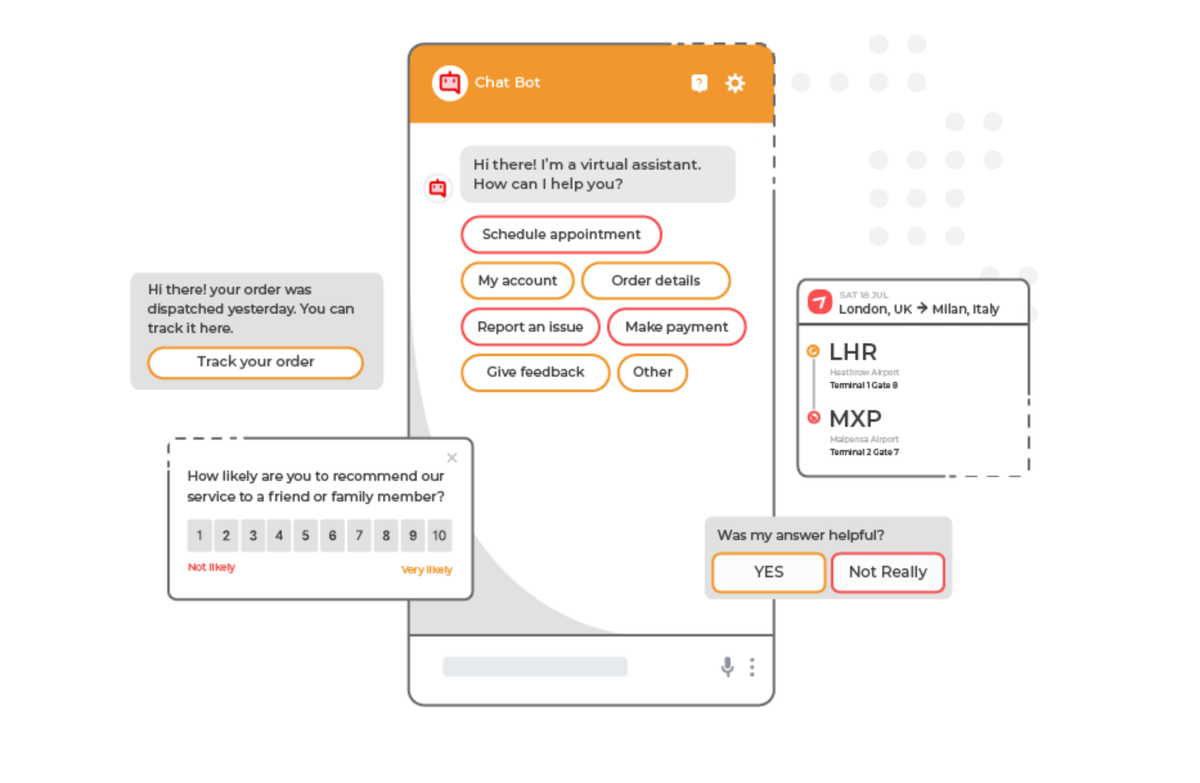Inside Kaleyra AI: Tata Communications on its new customer service platform
"Customers no longer tolerate friction and expect instant, context-aware responses on their preferred channels."

Companies have spent decades saying things like: "Your call is important to us." In the AI age, they will have to do much, much more to show customers they truly care.
One obvious way of making customers feel noticed is delivering personalised service that meets their exact needs, rather than forcing them into generic boxes. Chatbots and other AI tools are a key way of doing this, enabling organisations to scalably serve an audience of one.
Tata Communications, an Indian telecom giant, recently launched Kaleyra AI, a GenAI platform which lets businesses interact with customers across a range of communication channels.
Kaleyra AI enables businesses to personalize customer communications with AI-generated templates for WhatsApp, SMS, and rich communication services (RCS). It can also simplify complex data queries and produce instant, interactive AI-powered reports, enabling organisations to build no-code conversational assistants.
Acquired by Tata Communications in 2023 and based in the US, Kaleyra is a global CPaaS (Communications Platform as a Service) provider offering mobile communication services to enterprises worldwide.
To find out more about its work building an AI platform for one of the world's most famous telecommunication brands, we spoke to Mauro Carobene, Vice President and Global Head - Customer Interaction Suite at Tata Communications, who is pictured below.

How did we get here? What led to the genesis of Kaleyra AI?
"Kaleyra AI was primarily developed in response to the need for superior customer interactions across industries and geo-market trends. Firstly, the volume of interactions is increasing, necessitating the creation of more efficient interaction methods. Secondly, the rise in AI has led to the need for hyper-personalized interactions, ensuring customers receive only relevant information. Lastly, we believe AI will be a key transformational driver for enterprises, producing desired business outcomes and strong return on their investments.
"It is rooted in Tata Communications’ desire to enhance customer experience and efficiency through simplification and innovation. Superior customer interactions are an integral part of our larger company strategy of offering a Digital Fabric to businesses worldwide. Given the inherent complexity of various technologies and emerging systems, our strategy stemmed from a universal need to uncomplicate the infrastructure and create a new, unified fabric.
"This Digital Fabric encompasses four fabrics - network, cloud, interactions and IoT – with the foundation of innovation and security. Our Interaction Fabric allows communication through various channels, such as API, SMS, WhatsApp, email, voice and video. It includes two main components of customer engagement - namely CPaaS and CCaaS (contact centre as a service) - together that serve as a foundation for the CXaaS (Customer Experience as a service) platform we are building.
"Part of this Interaction Fabric, Kaleyra AI’s primary objective is to bolster interactions between enterprises and their customers. It enables enterprises to have all types of interactions from a single supplier, totally simplifying the process. As a pre-integrated system, most of the complexity is handled beforehand, allowing big enterprises to derive more value by consolidating their needs."
What did you do differently when building Kaleyra AI?
"Building Kaleyra AI involved a unique approach that set us apart from our competitors in several ways. While Tata Communications already is one of the few companies that can provide both CPaaS and CCaaS, along with all the underlying secure network infrastructure, we’ve not seen many players integrating AI to every layer of the offering as we are.
"This integration allows interactions to move across automated channels, like SMS or WhatsApp, to an agent-led conversation, with seamless transfer of contextual and customer-related information. Also, AI suggests responses and checks for sentiment during the conversation, providing real-time support to human agents, in addition to suggesting next steps.
"Our ability to design customer journeys based on desired business outcomes to achieve and provide end-to-end interactions for the customers are our key differentiators. We have a unique capability to provide a comprehensive, integrated solution, setting us apart in the market."
What problems does Kaleyra solve?
"There are numerous instances where Kaleyra AI can provide solutions to customer problems. A standout example is the simplification of customer interactions through a no-code bot builder. This feature allows any user of our solution, regardless of their technical ability, to train an AI assistant with a set of documents.
"For example, an extensive knowledge basis, to create a conversational interface that “chats with that document” and provides correct answers based on submitted inquiries. The user can also configure AI-powered ‘interaction assistants’ – that are fed with the documents once - to provide the answers in a specific style. This solution automates the process of creating conversational AI flows, that was once manual and time-consuming and ensures that the information being provided is not only accurate but also consistent. Additionally, those AI assistants can be integrated into company interfaces, digital touchpoints and contact center as well.
"The ‘interaction assistants’ can be connected to various channels, widening their accessibility to both internal and external audiences. This means the customer receives answers tailored to their specific inquiries, making their life easier and their experience more satisfying. In essence, Kaleyra AI’s no-code bot builder not only reduces the workload on employees but also ensures customers receive the most pertinent information to their specific questions."
How are businesses changing the way they connect with audiences?
"A few months ago, I had a flight delay while travelling for an important business meeting. As I stood at the airport, I noticed two very different customer experiences playing out. One passenger was desperately trying to reach an airline agent over the phone, navigating an endless maze of automated responses, while the other simply typed a question into WhatsApp and instantly received a helpful, AI-driven response. The contrast was striking — one experience left the passenger frustrated and anxious, while the other was seamless, efficient, and stress-free.
"This moment perfectly illustrates a key trend for 2025: the rise of AI-driven, hyper-personalized interactions across industries. Customers no longer tolerate friction; they expect instant, context-aware responses on their preferred channels. Businesses that fail to adopt AI-powered CX solutions will struggle to meet these evolving expectations. In 2025, we also expect to see many brands testing Agentic AI to solve challenges like the one stated above, with broader adoption from 2026 onwards.
"Another major shift is the convergence of automation and human interaction. AI is no longer just a tool for handling FAQs—it’s now guiding human agents with real-time suggestions, sentiment analysis, and predictive insights. This ensures that when customers interact with a brand, the interaction is far more meaningful and productive, even when it’s automated.
"Additionally, we are seeing a move toward unified, omnichannel engagement. Customers want continuity - whether they start a conversation on WhatsApp, switch to email, or eventually connect with a live agent, they expect a seamless experience. Solutions like Kaleyra AI, which integrate CPaaS, CCaaS, and AI, are helping businesses deliver this fluidity across all touchpoints.
"Lastly, security and compliance will be more crucial than ever. As AI-driven interactions become the norm, ensuring data privacy and adherence to global regulations will be paramount. Enterprises will need to invest in secure, compliant AI solutions that build trust with their customers.
"In 2025 and beyond, businesses that harness AI to deliver real-time, contextual, and emotionally intelligent interactions will emerge as industry leaders. Those that don’t, risk losing customers to competitors who prioritize effortless, engaging, and secure customer experiences."
Have you got a story or insights to share? Get in touch and let us know.




